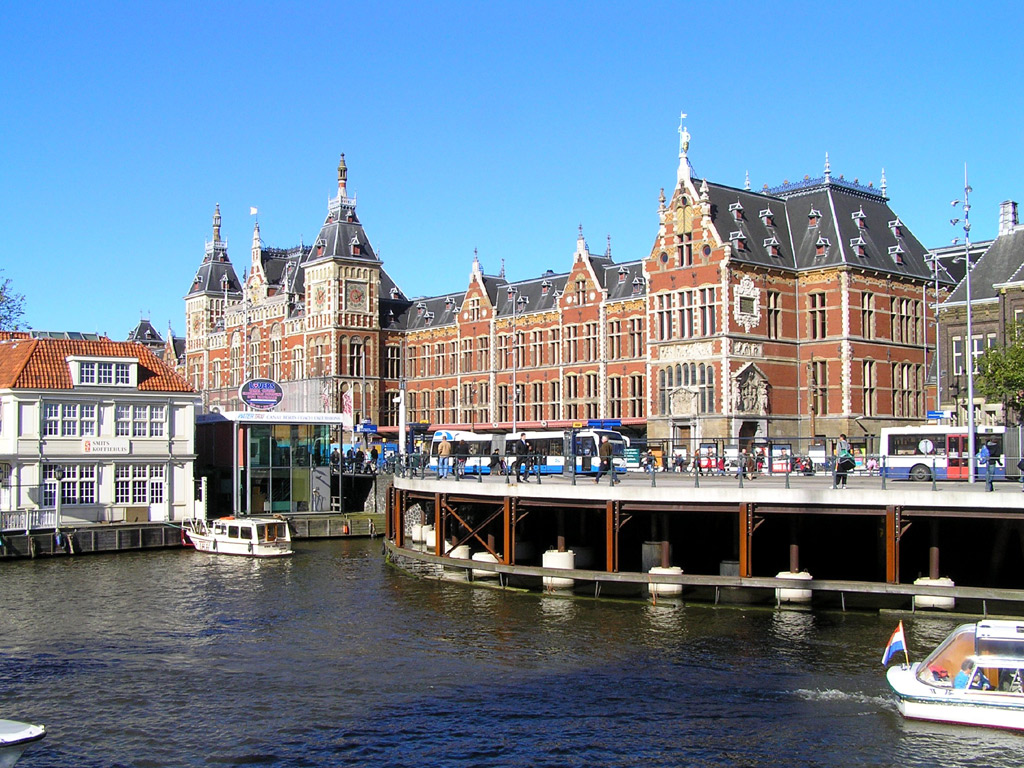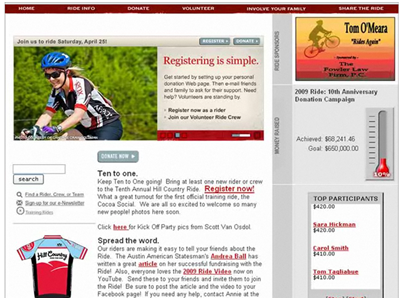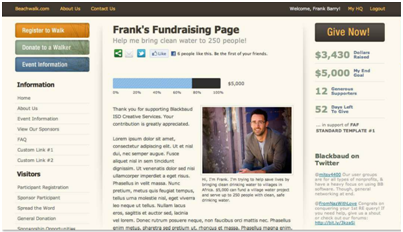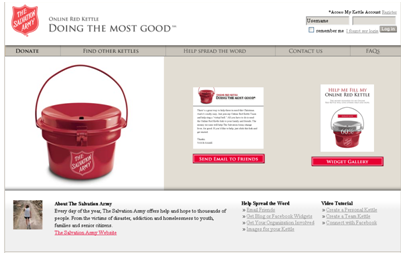Organizations’ marketing strategies and missions themselves may need to be reexamined to determine whether or not they align with the next generation of donors. There are a number of practices that organizations can start to embrace in order to expand their mission to a more diverse population while not running the risk of alienating their current support base.
In the News: August 2022
Emerging Digital Pathways #4 of 5: Mobile Bidding
Congress Ignores President's Plan to Cut NEA: What This Means for You
Public Financing for the Arts in Europe Takes a Hit
 Tell me if you have heard this one before.
In the midst of an economic downturn, a country desperately searches for cuts in spending anywhere it can, as calls for budget austerity grow louder. In the end, it’s the more vulnerable programs that are hit the hardest, which often includes education programs, safety net measures, and the arts community.
Tell me if you have heard this one before.
In the midst of an economic downturn, a country desperately searches for cuts in spending anywhere it can, as calls for budget austerity grow louder. In the end, it’s the more vulnerable programs that are hit the hardest, which often includes education programs, safety net measures, and the arts community.
While that above paragraph would describe the arts community in the United States in recent years, the trend is now playing out across Europe as debt-ridden countries turn to austerity measures in the face of the European debt crisis. While European countries spend significantly more on the arts than we do in the United States, the dangers of budget austerity in the coming years for the arts community in several European countries are very, very real.
I have been thinking a lot about this issue of arts funding in Europe vs. the United States over the past week, and two events in particular heightened my interest. First, this past Friday, we sponsored a Carnegie Mellon Master of Arts Management Speaker Series event with the Consulate of the Netherlands, who were in town for the annual Dutch Festival in Pittsburgh. We started talking about the difference in the way the arts are funded in a country like the Netherlands versus the way it is funded here at home. More on that in a minute.
The other item that caught my interest was a front page story in the New York Times yesterday about the fate of public financing for the arts in Europe. As I mentioned above, Europe is now going through the same kind of austerity measures that rocked the United States in 2009: debt is growing, calls for fiscal restraint are getting louder, and every program is being measured for its return on investment and how important it is going forward.
The numbers are striking: as the New York Times reports, in the Netherlands, the budget for arts and culture is seeing a decrease of roughly $265 million, or 25 percent. In addition to those cuts, the public is being asked to pay more to see shows and events, with increased taxes on tickets.
These cuts are hitting smaller venues, troupes, and companies the hardest: with less funding to go around, existing expenditures are being targeted at more established performers, forcing more unique acts, which may be struggling for audiences, to face an uncertain future.
And while some may feel that cuts to the arts in Europe would have little effect on the arts here in the United States, one of the expenses artists in Europe are cutting back on are trips and performances overseas, to countries like the United States. Artists are cancelling trips and forcing festivals to find alternative performers.
Another effect this is going to have on the American arts community is over the issue of fundraising. As we discussed with the Consulate of the Netherlands on Friday, there are different views towards art funding in Europe than there are here. In a country like the Netherlands, a resident pays higher taxes to pay for additional services like health care, transportation, and safety net measures. Another element of those increased taxes is funding for the arts; with the government taking a higher percentage out of every paycheck, many Dutch residents feel they are less inclined to donate their own money to the arts because they feel like the government is already doing it for them.
Here in the United States, the opposite is true: the National Endowment for the Arts (NEA) receives such a small percentage of overall government revenue (usually in the range of $150-160 million, compared to billions of dollars in several European countries) that the vast majority of funding for the arts comes from donations from individuals. Since Americans are taxed at a much lower rate, they have more disposable income, and thus more free to donate it to the art of their choosing. There are issues of whether a lot of this money is really going to where it is needed, but that is a discussion for another day.
With European governments cutting back on their arts funding, this is naturally going to lead to artists in Europe to seek alternative sources of revenue. As the New York Times explains, this includes going after their descendents currently living in America – who may be already donating to arts organizations in their communities.
So this presents a problem: a global recession and austerity measures in dozens of countries, all leading to a shift in the way arts are funded worldwide. It will lead to more uncertainty, a greater dispersion of artistic funding and increased competition for the individuals who provide a sizeable percentage of giving.
Is the current model, where American artists rely mostly on private donations and European artists rely on government grants, sustainable? For the United States, absolutely. With calls from some politicians to cut and even eliminate funding for the NEA and other culture programs, there is certainly little chance of seeing an increase in federal funds for the arts.
As for Europe? That is a different story. As the story goes, as the pond gets smaller (in this case, the pond symbolizing the amount of funding), the fish will get nervous, and perhaps seek refuge elsewhere, in the form of spending more of their time fundraising, at the expense of the very same art they are seeking to promote. With artists now having to listen to potential funders, who may have a different vision for what kind of art they want to see, the impact on what kind of art is made and performed is bound to be substantial.
In the short term, the effect is obvious: less festivals, traveling art troupes, and shows. Fewer jobs for artists in countries like Italy, Hungary, Netherlands and Greece. Fewer opportunities for tourists and residents to see the best of what each of these countries has to offer.
It really is sad, but perhaps unavoidable. As I have written before, we seem to find ourselves in the era of budget austerity, and even while the economy has shown signs of improvement in recent months, the desire to increase funding for the arts pales in comparison to support for other existing programs.
The promise and benefit of increased funding for the arts, both at the private and federal level, is well known to all readers of this blog. The New York Times piece describes Europe as the place “where art is life,” and while that is certainly true to anyone who has visited, the newfound austerity measures being put in place represent a significant threat to that very same life going forward.
Peer to Peer Fundraising in the Digital Age
Back in the day, peer-to-peer fundraising was done with phone calls, letter-writing campaigns, and in-person visits. Now we have a whole new universe of not only digital communication, but digital relationships. Recently, I came across a cool infographic from Blackbaud that illustrated the power of harnessing online social networks to raise money for charity. It got me thinking- what are organizations doing to take advantage of this?
Peer to Peer Products
Peer to peer fundraising tools offered by Blackbaud (Friends Asking Friends) and Convio (Team Raiser) enable team members and participants to set personal fundraising goals and then go about asking friends and family for donations, the deadline for raising funds usually being an organizational event (primarily races to cure diseases). In fact, according to the Chronicle of Philanthropy, all of the top five P2P Giving organizations in 2010 were health organizations (for the top 25 online giving orgs of 2010 view slide 8 here).

- Convio's Team Raiser


- BlackBaud's Friends Asking Friends- thanks Frank Barry!

If you put on these participant-heavy events, here’s a post about 3 ways to add new event participants. But according to a webinar by Blackbaud on Tuesday, you don’t have to have an event in order to use these tools. Organizations are using them both with ongoing fundraising and with virtual or digital events as well.
Website Tools
Both the Salvation Army and the World Wildlife Federation have cool things that are like the peer to peer tools above, but are designed for ongoing fundraising. The Salvation Army has an “Online Red Kettle”. You can either start your own red kettle, donate to an existing one, or send an eCard to your friends (via email) urging them to support one. If you set up your own, you can have your own fundraising meter, banner ad, or Facebook app.

- Online Red Kettle

On the WWF’s site, you can search for or make a super-cute Panda Page (it can be for any animal), then email it to your friends and family. As of right now there weren’t any social media plug-ins on the page.

- World Wildlife Federation Panda Page

Another way to configure your website to encourage peer-to-peer fundraising (also suggested by Frank Barry and Steve MacLaughlin of Blackbaud) is to immediately prompt online donors to share with their social networks when they make a gift, instead of only receiving a regular confirmation page or email. Use Facebook and Twitter plug-ins (like and share buttons, retweets etc) to make it simple for them to share with their networks.
You can also embed those same plug-ins in different areas of your website. Enable somebody to “like” a concert, or retweet a story about your outreach program.
Facebook Causes
Causes has alternately been held up as a model for success and derided for not delivering on its promises. The basic idea is that it allows anyone to create an advocacy group, or “cause”. This cause can then raise funds to donate to a charity. One of the most successful causes is The Nature Conservancy, which has raised over $400,000. An arts success story is Keep the Arts in Public Schools, created by Americans for the Arts, which has raised almost $50,000. People can become members of the cause, donate, tell friends, and “give a minute” by watching and participating in ads that earn money for the cause.
Aaron Hurst of Taproot has been a critic of Facebook Causes since his organization devoted $3,000 of staff time to creating their Cause shortly after Facebook launched the feature. They have received only $60 in return to date. Is Causes a rip-off or a revolution in fundraising? The jury’s still out, but it’s my guess that the different results are due to a combination of knowing how to facilitate peer-to-peer fundraising well, an organization’s existing fan base, and the type of cause. It’s interesting to note that at the Nature Conservancy, social networking was never primarily about raising money- it was “first and foremost a tool for brand and reputation,” said an organizational representative in this 2009 Washington Post article.
Kickstarter
Much has been written about Kickstarter and its cousins, IndieGoGo and RocketHub (among others- check out Pat’s article from last year). And certainly anyone using these tools knows that it’s all about mobilizing your social network. It’s really better suited to specific projects than ongoing fundraising, however. And unless you are able to get your supporters to in turn appeal to their own friends, you are probably going to be asking the same people you always ask anyway.
According to a recent article from NPR, Kickstarter has raised over $50M for creative projects since launching in 2009 and currently attracts $2M in pledges each week for projects.
Check out this Mashable article on other social fundraising alternatives.
The philosophical side
There’s a lot more to this than just raising more money. It’s also about building donors of the future, and increasing not just donations but engagement that will later lead to donations.
On Wednesday, the Case Foundation hosted the Millennial Donors Summit to talk about millennials’ approach to charitable giving. A lot of the points that were made apply not only to millennials, but also to peer-to-peer and social media fundraising. The following is excerpted from Katya’s Non-Profit Marketing Blog:
- It’s not about telling millennials to support you; it’s about creating a vested interest in what you are doing with joint ownership. Let millennials manage your community, design your logo or otherwise be an active partner in what you seek to accomplish.
- At some point, you have to build an army. You can only sell something yourself so many times—you need your community doing it for you, performing the heavy lifting. So give them ownership.
- To be trusted on the web, be an individual, not an organization.
- Look for the small yes.
Something that Frank and Steve mentioned in their webinar this week is that it’s more important to tell a compelling story than it is to make the ask when using social media to fundraise. They gave examples of YouTube videos where the ask was a subtitle. The story is what gets people interested.
Also, give them something to do besides donate. Encourage them to like your page, share the link or video, comment, or even answer a question (like at Free Rice) or send mom a card.
Many of these examples are from very large organizations that have teams of people to create these web tools. But these ideas can be applied on a smaller scale. How have you empowered your constituents to raise money and awareness for you? Do you know of arts organizations who are doing it successfully?
Why Art? Because it's Not Only For "Us."
Tim Mikulski grabbed my attention the other day with his ARTSBLOG post, asking, "[A]s our public debt deepens and we start to see the proverbial writing on the wall, what is that new argument for funding arts organizations and programs?" Amidst cautious optimism (!?) about economic upturn, We In The Arts are still reading horror stories about everyone from universities to public elementary schools cutting arts funding. Newly-appointed NEA Chairman Rocco Landesman's opinions are already sparking debate, and there have been some thoughtful reactions from opponents, as well as others that send shivers down my spine.
So Mikulski's question is more important than ever. We In The Arts like to say that "the Arts are always the first to go!" and "the Arts are considered fluff!" and "imagine a world without us!" Jan Selman, of Arts Leadership League of Georgia, responds to Mikulski: "I do not debate from a victim mode. I believe that our industry is as viable and important as any other industry." What a brilliant point! In other words, we doth protest too much. And in so doing, lend credibility to those who DO approach the Arts from the very stance we are so convinced "always" result in the Arts getting the axe.
We cannot allow ourselves to play the victim, as much as we may perceive ourselves at the whim of Others Who Don't Understand.
I suggest, as difficult as this may be for many, to remember, for a moment, that Art is not just a tool of the Left. When arguing on behalf of the Arts, I argue for the right for all Artists to be taken seriously. (No, I'm not saying that I think all "Art" is "Good," but We In The Arts are not only those Bohemian Lefties that Landesman and Laura Collins-Hughes on ARTSJOURNAL's blog, agree are perceived as "a little gay.")
Yes, there is Art that is "obscene" or "offensive" to conservatives, and there is at least some art that is offensive to "the typically outraged" liberals. (And as for the Obama in Joker Whiteface poster, I take this argument to the conclusion that any artist who wants to make a provocative statement should at least take responsibility--or credit?--for it, and engender dialogue.)
Historically, Art has caused outrage as it evolves with (and sometimes spurs the evolution of) its society. I say, more power to Artists who question our world, even if they argue against what I believe, as long as they stand behind their work. There is something refreshing about my getting enraged because a well-done piece argues so passionately for something that I think is wrong.
And so, when I argue to preserve funding for arts organizations and programs, I have something new to say. I will no longer play the victim. I will say, because Art gives people another way to communicate, and can spread messages across the boundaries of beliefs. Art is a different way to dialogue and discuss--it is subjective, it is not RIGHT or WRONG.
Art isn't only the product of the crazy gay liberals. It can be the product of insane heterosexual conservatives as well. And everyone in between.








